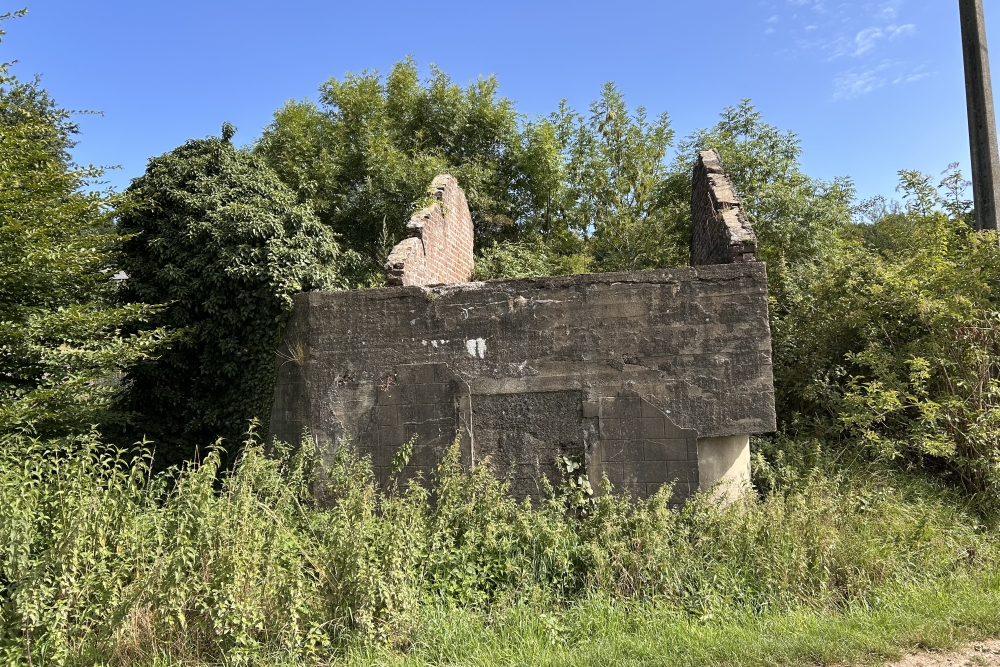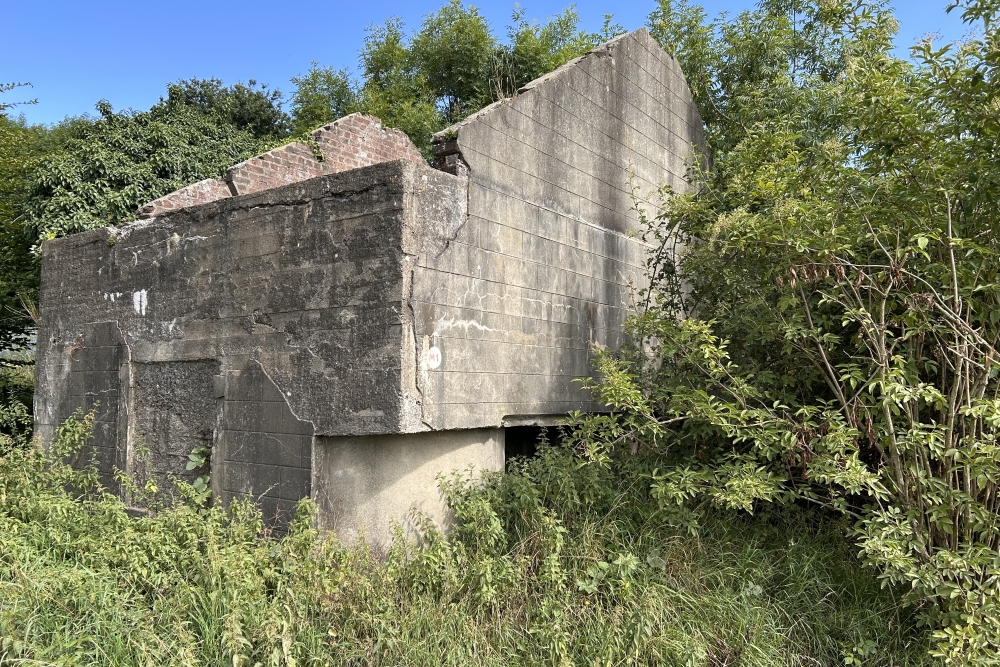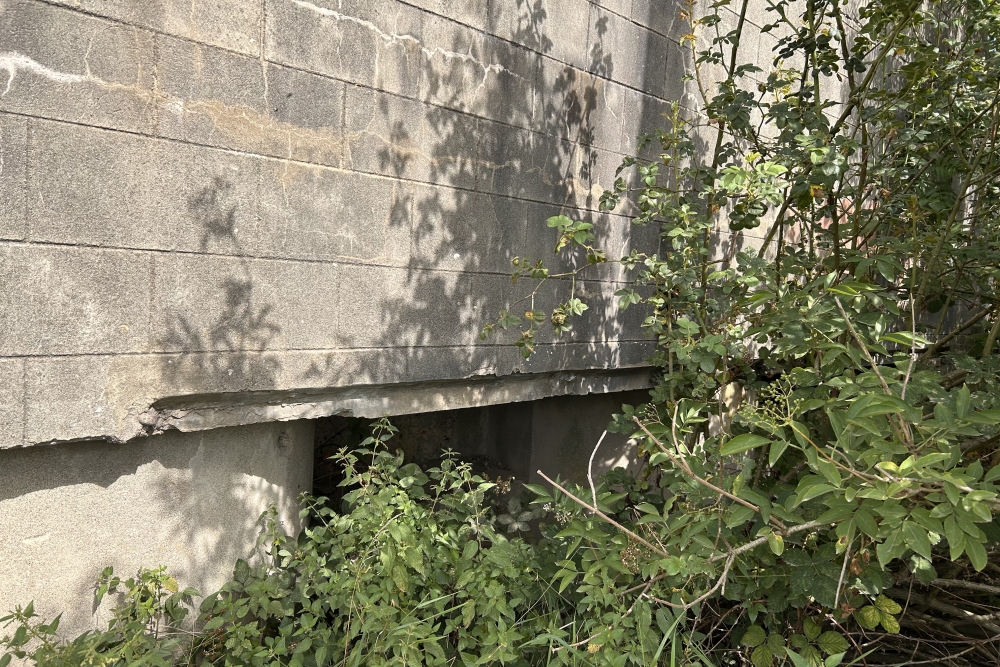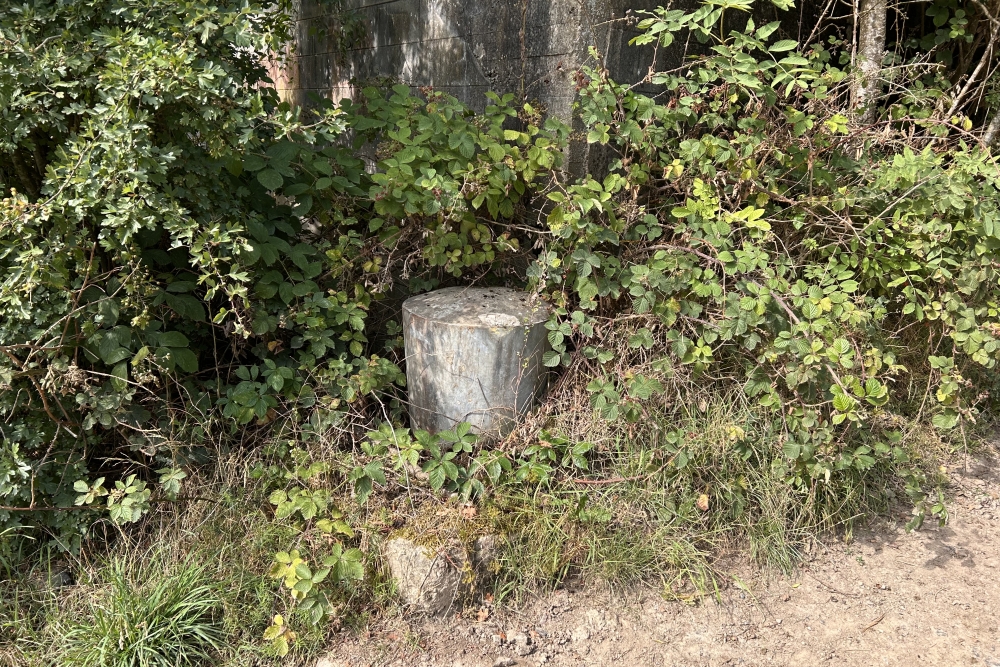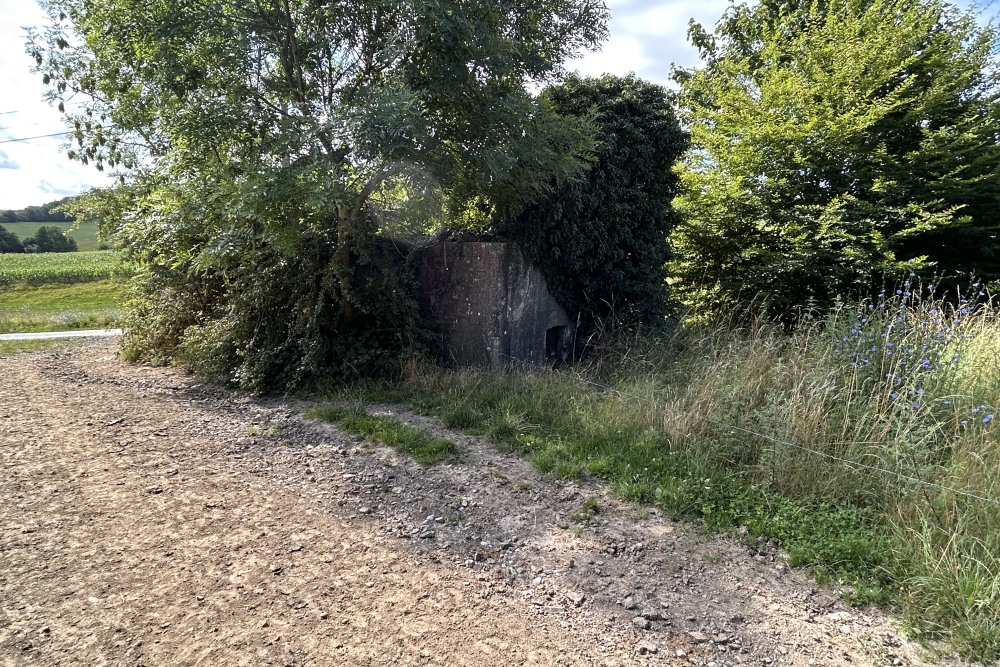Bunker PFN, Maizeret
This bunker, located between Fort Maizeret and Fort Andoy in La Position Fortifiée de Namur (PFN), is a perfect example of a bunker camouflaged as a house. The gun opening is clearly recognizable (photos 2 and 3).
From a distance, you would not recognize the building as a bunker, especially if the tiled roof, which has been lost over the years, were still present. It was therefore camouflaged to mislead the enemy into thinking that it was a small barn. The idea was that reconnaissance by aircraft or advanced scouts would not notice the building as a defensive structure.
This bunker was equipped with a 47 mm anti-tank gun or a heavy machine gun.
The walls and ceiling of these bunkers were made of 1.30 m thick reinforced concrete. They could withstand shells up to 150 mm. Only the rear of a bunker was made of 1 m thick concrete because no attack was expected from that side.
When the bunkers lost their strategic value for the defense of Belgium after the war, all the steel was removed. It was sold as scrap metal.
This type of bunker can also be found in La Position Fortifiée de Liège, bunker MN-24 at Dalhem (province of Liège).
On the side, there is another so-called ‘Borne Cointet’. These are posts made of concrete cast in a steel casing that are anchored up to 2 meters deep in the ground. A steel cable could be stretched between two of these posts, allowing enemy vehicles to be stopped once they reached this point and the bunker had already been disabled. The post on the other side of te road does no longer excists.
For another example, see Bornes Cointet anti-tank at Émines.
Do you have more information about this location? Inform us!
Source
- Text: Ed Lewandowski
- Photos: Ed Lewandowski
Nearby
Monument
- War Memorial Maizeret - Maizeret (Andenne)
- War Memorial Thon-Samson - Thon-Samson (Andenne)
- War Memorial Namêche - Namêche (Andenne)
Cemetery
- Belgian Graves Veterans Maizeret - Maizeret (Andenne)
- Belgian Graves Veterans Mozet - Mozet (Gesves)
- Belgian War Graves Mozet - Mozet (Gesves)
